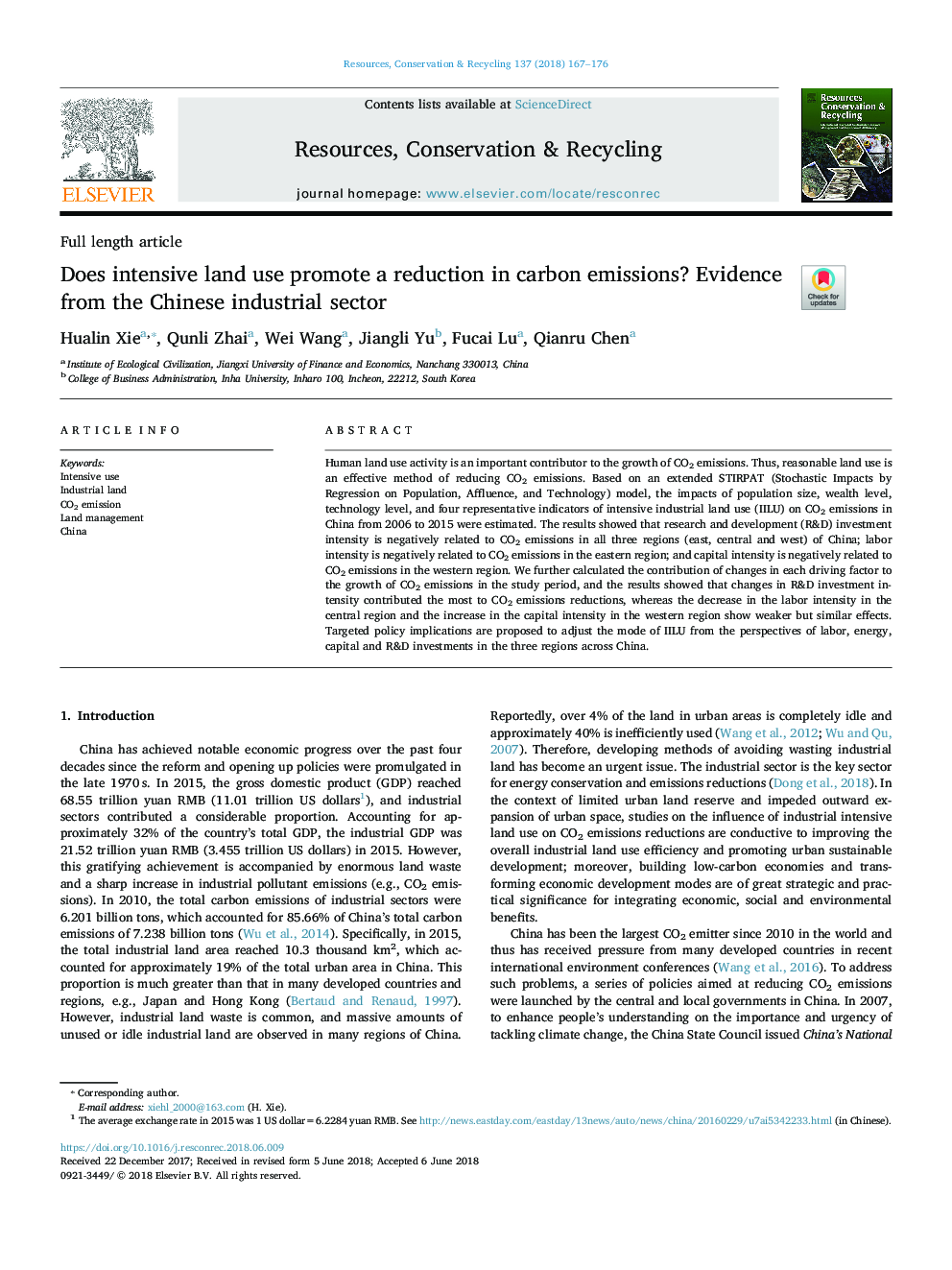| Article ID | Journal | Published Year | Pages | File Type |
|---|---|---|---|---|
| 7493884 | Resources, Conservation and Recycling | 2018 | 10 Pages |
Abstract
Human land use activity is an important contributor to the growth of CO2 emissions. Thus, reasonable land use is an effective method of reducing CO2 emissions. Based on an extended STIRPAT (Stochastic Impacts by Regression on Population, Affluence, and Technology) model, the impacts of population size, wealth level, technology level, and four representative indicators of intensive industrial land use (IILU) on CO2 emissions in China from 2006 to 2015 were estimated. The results showed that research and development (R&D) investment intensity is negatively related to CO2 emissions in all three regions (east, central and west) of China; labor intensity is negatively related to CO2 emissions in the eastern region; and capital intensity is negatively related to CO2 emissions in the western region. We further calculated the contribution of changes in each driving factor to the growth of CO2 emissions in the study period, and the results showed that changes in R&D investment intensity contributed the most to CO2 emissions reductions, whereas the decrease in the labor intensity in the central region and the increase in the capital intensity in the western region show weaker but similar effects. Targeted policy implications are proposed to adjust the mode of IILU from the perspectives of labor, energy, capital and R&D investments in the three regions across China.
Related Topics
Physical Sciences and Engineering
Energy
Renewable Energy, Sustainability and the Environment
Authors
Hualin Xie, Qunli Zhai, Wei Wang, Jiangli Yu, Fucai Lu, Qianru Chen,
